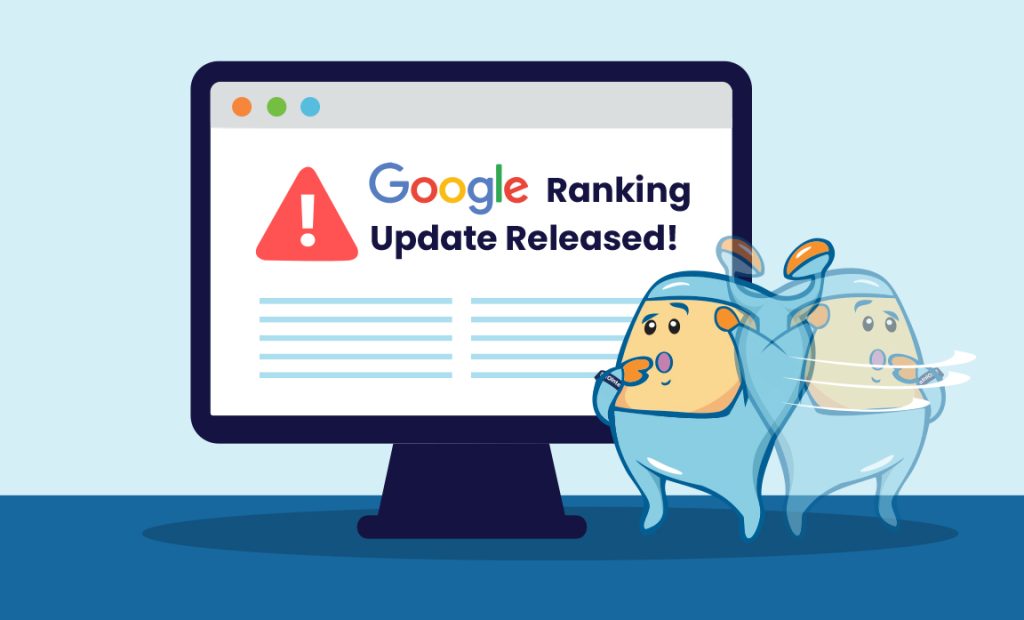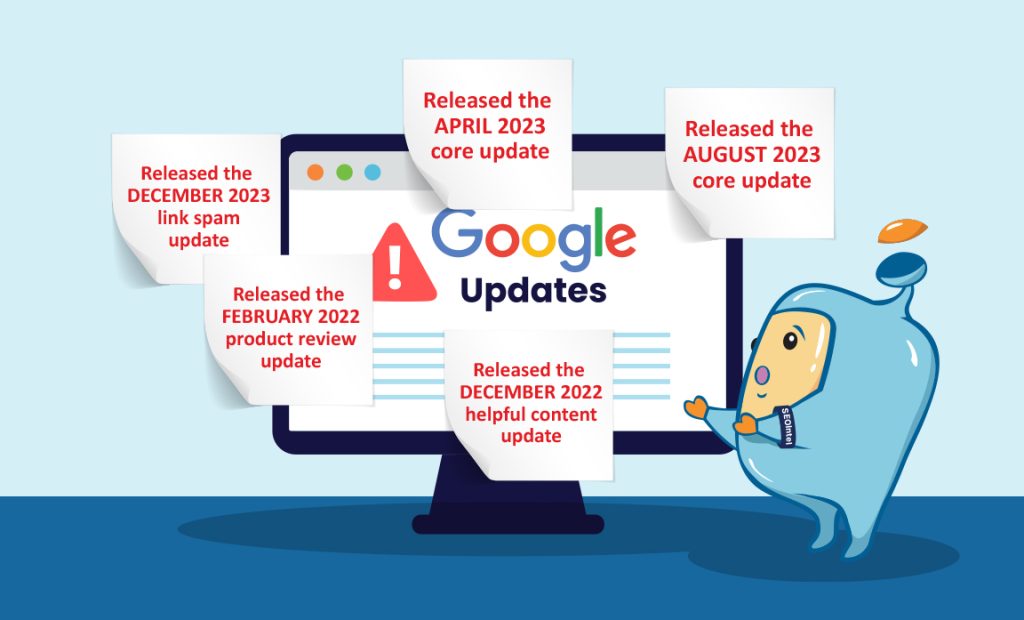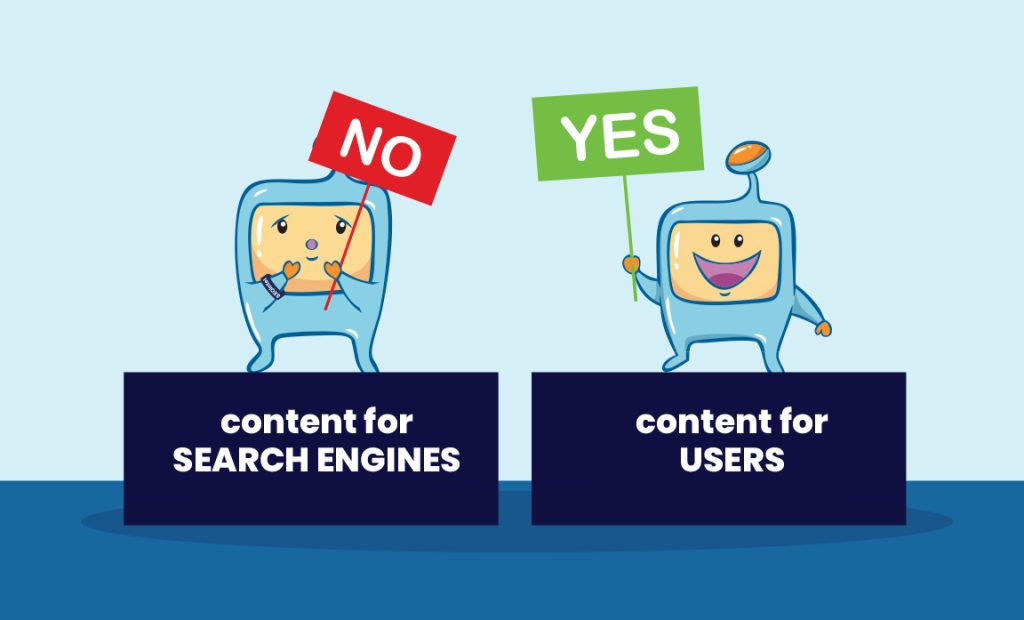
On August 22 (2023), Google announced the 2nd core update of this year, with the first core update happening in March. It is expected to roll out in two weeks.
In the last core update, a number of sites experienced drops in search visibility and rank. With this current update ongoing, a lot are on the edge of their seats, watching the effects closely, with their fingers crossed that whatever effect this update has, is for the positive.
The same day that the core update was announced, the Google search team also released a Search Off The the Record podcast episode talking all about ranking updates and in this article, we talk about the golden nuggets discussed in the episode. What should you do during a ranking update? Oh no! experienced a drop in rank or traffic? What’s the next step? How do you recover from it? Read all about it in this article.

According to Danny Sullivan, Google Search’s Public Liaison, the Google Search Documentation lists down the important ranking systems (not all) that Google have had and is using. The purpose of the documentation is to primarily help anyone (content creators, developers, site owners, SEOs, etc.) understand the various systems that Google has and that they use in ranking.
According to Sullivan, a lot of people think that the Google algorithm is a giant thing but it is actually multiple systems that all come into play. There are documentation on the rankings systems as it seemed like it would be useful to list them down and provide details on them so that people would be able to understand them and what is involved with ranking on a recurring basis – like the core ranking system, helpful content system, etc.
Last year, Google released their Guide To Ranking Systems and in the guide, clarifications between “ranking systems” and “ranking updates” were provided. Sullivan mentioned that it was a move to clean up some legacy stuff that they had inherited. People may recall things like the “Panda Update” which was a system designed to provide more relevant results. It was called an update then because people were used to how anytime that Google search results would shift because of a ranking shift, this was called an “update”. Because of this, every time the Panda system would get an update, there would be a Panda update 2.1, Panda update 2.2, etc., which continued along as updates were done. Anytime something came out that was actually more of a ranking system, it was called an update. By the time Google got to something like the helpful content update – which was called that when it launched, it was going to be confusing to say – “Well, now we’ve done the ‘helpful content update – update’” whenever an update to the system was done.
This is why the guide to ranking systems were released and the clarification between systems and updates were provided – “Look, we have these ranking systems, for example, the helpful content system, and periodically some of these systems get updated.” So whenever Google talks about an update, it means that this particular ranking system has been reworked or improved in a way that they think will provide better results.

According to Sullivan, the good news is that part of what they have been doing the past years is they have created standalone pages that explain some of Google’s key ranking systems, what you should think about as a content creator, developer, SEO, in regards to these ranking systems, as a helpful guidance.
For example, under the Reviews system, what should you do with your reviews? There is a page about it that provides guidance on writing high-quality reviews and asks questions such as – are you writing authentic reviews, are you showing that you actually used the product that is being demonstrated and it’s self-evident to people, etc.
Sullivan states that as a creator, none of this should really cause you to do anything different whenever a ranking system update is rolled out. When the helpful content system was introduced, the guidance has always been creating helpful stuff for users so it really shouldn’t cause you to have to do anything different.
If you have seen a change after one of these ranking systems have been launched or updated, then that is probably a sign that maybe you are not as aligned as you should be with the things that Google has been looking for. Re-review the advice in the documentation and maybe that will help you get aligned with the systems better. The documentations provide guidance on what Google looks for and you can create content that matches it.
John Mueller also added that if you see some changes and you see that something on Google’s side has changed, look up to see what kind of change and based on that, review your content.
Sullivan mentioned the Google Search Status Dashboard which was developed by Gary Illyes of the Search Relations team. To those not familiar, the Search Status Dashboard provides status information on services under Google search such as crawling, indexing, ranking, and serving, and whenever there are issues encountered or updates rolled out, information would be visible in the dashboard. The dashboard also links back to the systems page and into the individual pages for these ranking systems. The whole goal is to be able to say – “Hello, web community, Google has made an update to one of its ranking systems. This is the ranking system, and this is how you can learn more about it.” If you suddenly notice a change that is happening, you would be able to understand that it is probably related to this particular system. If your traffic went up, you don’t have to do anything. If you’re performing less well, then you would want to review some of those guidance. It is designed to help people understand what’s going on.

There are some people who complain because of too many updates released by Google. Last year (2022) there were a total of 10 updates and so far this year, there are 4. Sullivan states that it is not that they are doing more updates to their ranking systems than ever before, but they are communicating more about it which is what everybody had said they wanted to, in the first place. Before, it’d be like, “Did something happen?” and it’s like, “Maybe.” And now it’s – “Yes, we are telling you there was this change to our ranking systems. This is what it was, so you know.”
This leads back to all the mystery updates that happen. Google does updates all the time but when they talk about them, those are the ones you probably should pay attention to because they think they’re notable in some way. All these is designed to help people understand what’s going on.

In the talk, Martin Splitt mentioned how updates keep happening and how it shows things are changing. As an example, he mentioned how at first, HTTPS became important and it was valued in ranking but as more and more sites switched to it, it became less an indication of care, quality, and user trust. Because of this, they have to accordingly changed that in the ranking and how it reflects the evolution of the ranking system. New things are coming, old things are being adjusted.
Due to this, it may become trickier for SEOs to figure out what to prioritize on. Splitt then asked if there is something that can be done to help people identify the thing that is important for their site specifically, besides the usual, make it as fast as possible, make it as useful as possible, as helpful as possible, as trustworthy as possible. If there are specific things to look out for?
Sullivan answered this by saying that these days, it is less about “these are the specific things” and more of “these are the mindsets you should be following”. They used the page experience system as an example of this.
The page experience system wasn’t so much a system as much as they were making use of individual signals. Understanding these particular signals are things that were used within ranking, generally. They’d look at things like Core Web Vitals, and they’d be looking at HTTPS usage. One of the advantages to talking about specific signals like that is that it can cause people to think – “Great, I’m going to work on these things”, and those are good things to work on. But then the disadvantage is – “But my Core Web Vitals are 8,000 percent, how come I’m not ranking at 8,000 percent?” Okay, because that’s one of the many signals Google uses in ranking, it doesn’t guarantee.
So, one of the shifts that Google made was really to say – “Look, page experience. We don’t want you to be thinking about these in terms of individual signals and I’ve got to do this one and I have to do that one, and if I get all those dialed up to 8,000 percent, then I’m going to finally rank,” as much as saying, “Look, page experience is this concept you need to keep in mind.” You want to provide a good overall page experience to people because that will correlate with people generally being happy, and often correlates with good, helpful content
To achieve that, there are certainly things you should be looking at – Core Web Vitals is an excellent guide to understanding some aspects providing a good page experience but it’s also possible you have great Core Web Vitals and yet you’re still providing a bad page experience in other ways. It’s really more like – here are some things for you to ask yourself and think about in terms of what a user might encounter when coming to this page, and use some of these metrics as you can. But overall, are you achieving the goal of having a good page experience?
It’s similar with what Google does when they talk about advice for core updates. They have documentation on creating helpful, reliable, people-first content and it has all these self-assessment questions and a lot of them originated way back from when they had the Panda system.
As they’ve been doing more documentation, it’s the same thing of trying to get people into that mindset of instead of chasing one particular thing, if you understand whether or not, from a human point of view, you’re aligned with these broad things overall, then you’re probably doing the right thing.
Mueller added that it’s a good way to look at it. A lot of the guidance that they have is a lot more about the bigger picture, because it feels like from a technical point of view, things are often pretty reasonable. And now you really need to get that bigger picture into the right shape, so that when users come, they’re like – “Oh, this is actually a helpful site.”
Sullivan added that the bigger picture really is, more than anything else, just put yourself in the shoes of someone who arrives at that content and what they’re going to be thinking about.

Mueller mentioned in the talk how one of the things that a lot of SEOs do is creating site audits. When they have a new client and they don’t really know their business or site, they would run the website through some tools that say – “Oh, it’s missing this. It’s missing that”. He asks how these should be taken, if they should make a checklist, and go through the questions that they have in the documentation.
Sullivan answers that first of all, they have a lot of technical guidelines that are pretty straightforward and they’ve got the Search Essentials. You should have good technical SEO but it is not going to make you number one.
In terms of content, there are guidelines to go through to ask yourself with regards to the content on the site and what improvements could be done.
Splitt added to look at the guidance and the idea is to align with the mindset and with the general broader picture with has pretty much been – create helpful, useful, fresh content for the users’ needs.

One topic that has been talked about is SEO’d content. Over the past year or two, people have been saying that they don’t like all the SEO content that they have been encountering in search. For an ordinary person to say that they see the SEO does not necessarily mean that they see the SEO as much as they are using the euphemism of, “This content really wasn’t designed for me, it was designed just to rank in a search engine.”
Sullivan thinks that to be successful as an SEO, you want to make sure that, if you’re producing content, that no one’s going to have that reaction.
Another issue that was discussed is long form content and how people write it long because Google says you have to have a gazillion words. It was clarified by Sullivan that they don’t say that at all. Not one place do they have anywhere saying, “Your character count need to be…” and this sort of thing has become a real turnoff to a lot of people.
Questions to ask yourself would be, “If I were a person coming into this, would I actually be satisfied?”, “Did I really write this for an actual person, that I’m thinking about my audience?” If you’re doing that, you really feel like the way you do it works and you’re getting the feedback from your audience that it’s all great. Just do it.
Splitt added that it all boils down to, are you doing SEO as a kind of dressing up pages, so that a hypothetical search engine system might pick it up and love it and hold it dearly and put it in the first position on the result page? Or are you trying to make something for your users and make it better, so that even a search engine, which is hopefully a less intelligent being than the people using the website can actually understand the goodness of the page?
Sullivan adds that he knows it’s exhausting to hear because people at Google have been saying it certainly over a decade now – “Focus on the content, focus on that.” But he thinks now more than ever, having that authentic content that you created because you have an actual audience in mind that you know would come to it directly, that is your way forward as you try to navigate this world of how ranking systems are evolving with Google. Generally, as we go into this world of AI content, it will have places and it’d be useful, but he thinks the bedrock will be to continue to point people towards authentic information. There’s a big craving for that, and that’s going to be your key to success.
To end the episode, Sullivan reminds us to continue to focus on the big picture and know that they’ll just try to share more information, so that we can understand more about the systems that are out there and hopefully be successful with them. With regards to algorithm updates, it’s really not something you necessarily need to react to.
As Splitt says, “Look at the big picture. Don’t worry about every single update. It might not be as important to your specific situation as you’d think, especially if you have the bigger picture in mind…the guidance in general hasn’t changed too much. Just make things that are fantastic for your users.”
That’s it, in a nutshell.
Listen to the Search Off The Record Podcast Episode here.